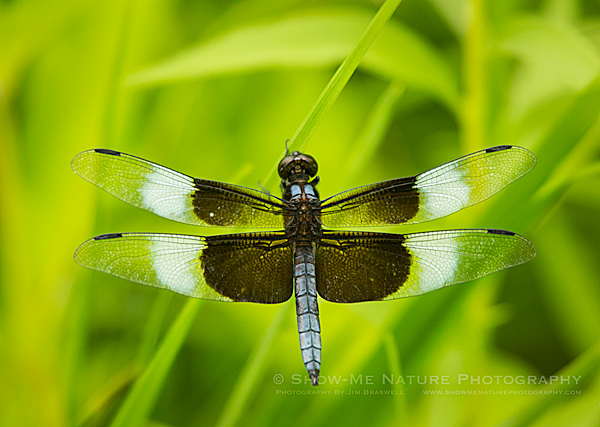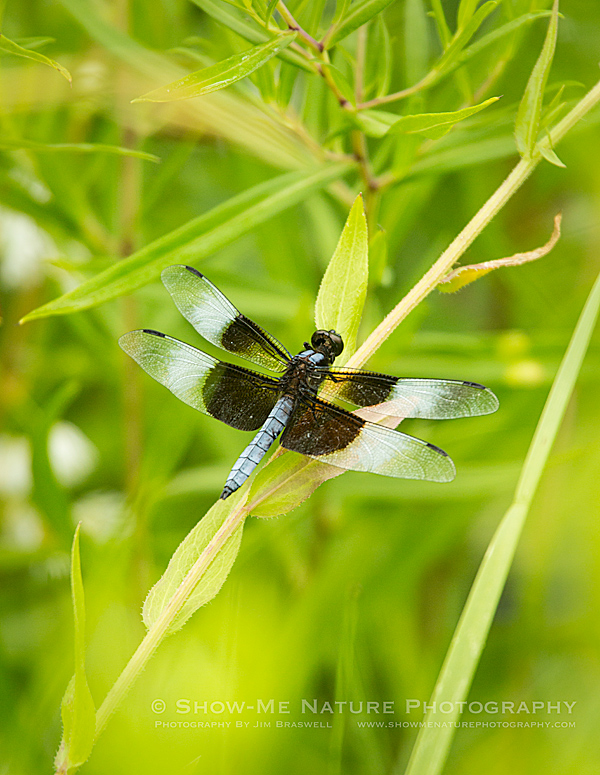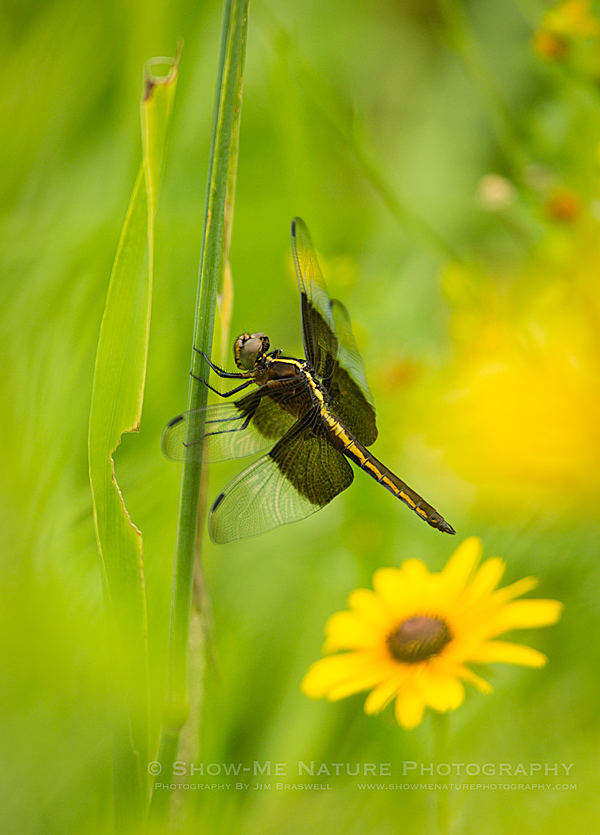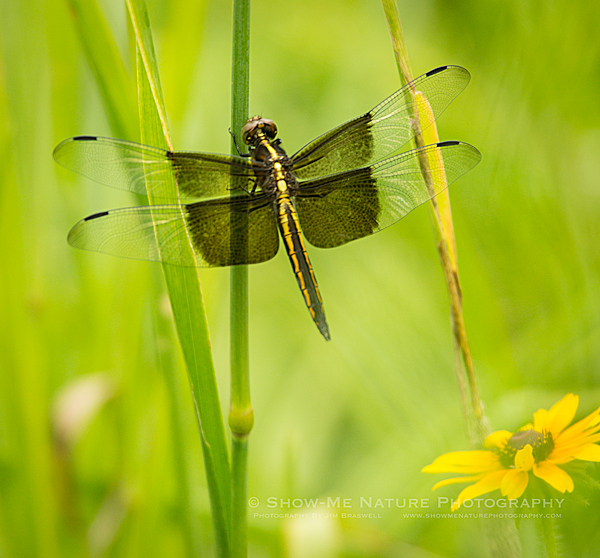While being a bit constrained with my physical activity, I’ve been trying to get out and photograph some of the natural world around my rural home. Having 9.5 acres of wooded/non-wooded land, there always seems to be something happening. So, it is quite easy to walk outside and have something of interest to photograph, without the need for long hikes (which I’m still restricted from doing, although I’m working my way back to that point).
One of the things that is abundant around my home, are dragonflies and damselflies (Link to Ebony Jewel-winged Damselfly post). Today’s post is about the Widow Skimmer dragonflies, which are very abundant around my wildflower gardens right now. Here are a few of my favorite images I’ve captured over the past day or so:
Some interesting facts about the Widow Skimmers:
- Widow Skimmers are a large dragonfly, with a wingspan up to ~8 cm and a body length of ~4-5 cm.
- Males are typically a bit different than the females and juveniles in coloration. The males’ abdomens and front of thorax are white and have a powdery appearance. The females and juveniles have a dark body with a yellow stripe which extends from the upperside of the thorax to the base of the abdomen, where it splits into two lines.
- Males wings are uniquely patterned wings, which are dark at the base, white in the middle and glass-like on the tips. Females wings are similar, but have a dark “smudge” appearance at the tips.
- Widow Skimmers are often active from April thru November
- Male Widow Skimmers actively protect their rather large range, chasing away other males, as well as other dragonfly species.
- The widow skimmer commonly inhabits areas surrounding ponds, marshes, lakes, pools and slow streams, but are often found far away from water in open country, meadows and roadsides (and in MY wildflower patch!).
Using the above information, can you identify the males from females/juveniles in the above photos?
Photographic Equipment Used:
- Canon 5D Mark 3 body
- Canon EF 100-400mm, f/4.5-f/5.6 telephoto lens + Canon 1.4X TC
- Handheld
- ISO 800 (all)
- Aperture f/8 (all)
- Shutter 1/250 sec. to 1/320 sec.














